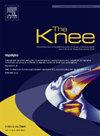Long-term outcomes, satisfaction, and survival rates of a medial pivot knee design
IF 2
4区 医学
Q3 ORTHOPEDICS
引用次数: 0
Abstract
Background
The aim of this study was to evaluate the long-term clinical outcomes, satisfaction, perceived joint stability, and survival rates following medial pivot TKA.
Methods
Data from TKAs performed at a single institution between 2008 and 2014 were retrospectively reviewed. Patients without consent were excluded. Inclusion: medial pivot TKA surgery. All patients received the same cemented Microport Advanced® and Evolution® Medial Pivot Knee System. Data collection comprised clinical and radiological outcomes, time of failure and/or death, surgical techniques (measured resection (MR) femur first technique following mechanical alignment principles vs. gap balancing (GB) tibia first technique preserving preoperative varus deformity up to 4°). Kaplan–Meier survival analysis compared survival between surgical techniques. Logistic regression evaluated surgical technique as a predictor for revision status. Risk analysis calculated relative and absolute risk differences between surgical techniques.
Results
Of the 137 patients included in the final analysis, there were 24 deaths (17.5%), 15 lost to follow up (10.9%), four revisions (2.9%). The final follow up was obtained for 94 patients (68.6%) without revision. The mean survival was 16.14 years (95% CI: 15.96–16.32; standard error = 0.93) at the final follow up with a median of 11.32 years (IQR, 9.57–14.04). The Kaplan–Meier/Mantel–Cox indicated no difference in survival between MR and GB (Chi-squared = 0.02, P = 0.876). No other predictors for revision were found (CPAK (P = 0.78), aHKA (P = 0.55), MPTA (P = 0.73)). Nine (6.6%) patients stated that they were not satisfied with no difference for surgical technique (Chi-squared = 0.59, P = 0.824).
Conclusions
The overall mean survival time was estimated to be 16.14 years with 97% survival rate.
内侧枢轴膝关节设计的长期预后、满意度和生存率
本研究的目的是评估内侧支点TKA后的长期临床结果、满意度、感知关节稳定性和生存率。方法回顾性分析2008年至2014年在一家机构进行tka的数据。未经同意的患者被排除在外。纳入:内侧枢轴TKA手术。所有患者均接受了相同的骨水泥Microport Advanced®和Evolution®Medial Pivot Knee System。数据收集包括临床和放射学结果、失败和/或死亡时间、手术技术(遵循机械对准原则的测量切除(MR)股骨优先技术与间隙平衡(GB)胫骨优先技术,保留术前内翻畸形达4°)。Kaplan-Meier生存分析比较了两种手术方式的生存率。逻辑回归评估手术技术作为翻修状态的预测因子。风险分析计算手术技术之间的相对和绝对风险差异。结果最终分析的137例患者中,死亡24例(17.5%),失访15例(10.9%),复查4例(2.9%)。最终随访94例(68.6%),无修改。平均生存期为16.14年(95% CI: 15.96-16.32;标准误差= 0.93),中位年龄为11.32岁(IQR, 9.57 ~ 14.04)。Kaplan-Meier / Mantel-Cox显示MR与GB的生存率无差异(χ 2 = 0.02, P = 0.876)。未发现其他预测因子(CPAK (P = 0.78)、aHKA (P = 0.55)、MPTA (P = 0.73))。9例(6.6%)患者表示不满意,手术技术差异无统计学意义(χ 2 = 0.59, P = 0.824)。结论总平均生存期为16.14年,生存率为97%。
本文章由计算机程序翻译,如有差异,请以英文原文为准。
求助全文
约1分钟内获得全文
求助全文
来源期刊

Knee
医学-外科
CiteScore
3.80
自引率
5.30%
发文量
171
审稿时长
6 months
期刊介绍:
The Knee is an international journal publishing studies on the clinical treatment and fundamental biomechanical characteristics of this joint. The aim of the journal is to provide a vehicle relevant to surgeons, biomedical engineers, imaging specialists, materials scientists, rehabilitation personnel and all those with an interest in the knee.
The topics covered include, but are not limited to:
• Anatomy, physiology, morphology and biochemistry;
• Biomechanical studies;
• Advances in the development of prosthetic, orthotic and augmentation devices;
• Imaging and diagnostic techniques;
• Pathology;
• Trauma;
• Surgery;
• Rehabilitation.
 求助内容:
求助内容: 应助结果提醒方式:
应助结果提醒方式:


